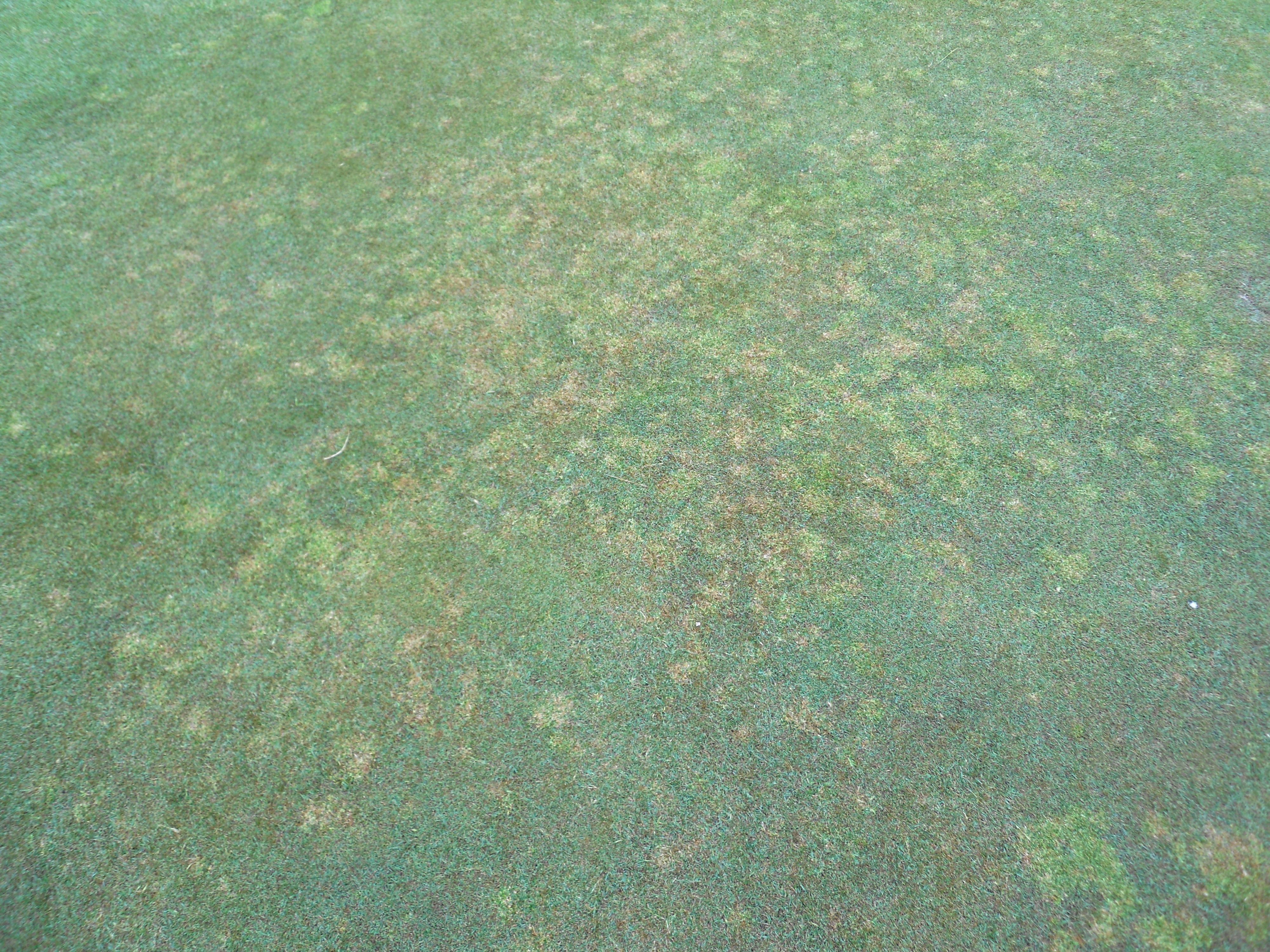
Maryland was first to quantify the emergence patterns of annual bluegrass (Poa annua aka Poa) in turf. In our region, Poa begins emerging following the first major rainstorm after Labor Day. Poa blows out of the ground in October and November and slows as soils chill in December. Hence the phase “if you core in October or November you are planting Poa”. Poa emerges in small populations throughout mild winter periods, but it is mostly over by spring. The only exception, in terms of spring germination, is bare ground sites where soil is disturbed.
 Our research also showed that most preemergence herbicides (e.g., Barricade [prodiamine], Bensumec [bensulide], Dimension [dithiopyr], RonStar [oxadiazon] , Pendulum [pendimethalin]) do a very good job in preventing Poa when applied around Labor Day. An exception is pendimethalin, which does a good job if it is a cold winter, but not during a mild winter. In higher cut turf like roughs and green surrounds, a pre is the best choice, but only if you have good turf cover and have no near future plans to overseed.
Our research also showed that most preemergence herbicides (e.g., Barricade [prodiamine], Bensumec [bensulide], Dimension [dithiopyr], RonStar [oxadiazon] , Pendulum [pendimethalin]) do a very good job in preventing Poa when applied around Labor Day. An exception is pendimethalin, which does a good job if it is a cold winter, but not during a mild winter. In higher cut turf like roughs and green surrounds, a pre is the best choice, but only if you have good turf cover and have no near future plans to overseed.
On greens, we found that Trimmit [paclobutrazol] was as good as, if not better than Bensumec [bensulide], in controlling Poa preemergence. However, there are caveats. Bensumec is old chemistry, an EC (thus a high burn potential when applied in hot weather) and foul smelling. The rate is 12.0 lb ai/ A – a heavy dose that needs to be applied around Labor Day and watered-in immediately. Back in the 1970’s and 1980’s some superintendents used Bensumec (then known as BetaSan or PreSan) both in spring for crabgrass control and in fall for annual bluegrass control. It can be phytotoxic in hot weather, when used on bentgrass less than one year old or sod installed within the last year. Tennessee researchers in the 1980’s showed that continuous use of bensulide (spring and fall) over a period of several years caused rooting problems and deterioration of greens. On greens, don’t expect more than 80% preemergence control with Bensumec and it will have no effect on existing Poa. For pre-Poa control, Trimmit requires multiple applications beginning around Labor Day, which means more work and money.
All of my pre and existing Poa suppression research on greens involved Trimmit. Nebraska researchers, however, also found that Cutless [flurprimidol] has preemergence Poa activity in greenhouse studies. Trimmit has a greater ability to suppress existing Poa, but Cutless causes less discoloration. I have no hands-on experience with pre-pack mixes such as Legacy (i.e., Cutless + Primo) and Musketeer (i.e., Cutless+Trimmit+Priomo). If you have a “comfort zone” with these products – they would be good choices for you in assessing their possible value for preemergence Poa control on your greens.
Given the very close chemistries Trimmit and Cutless, I think it safe to assume that Cutless would perform in a manner similar to Trimmit. Extrapolating from only 2 years of research (i.e., much confirmation work is needed), over 90% pre-Poa control was achieved by applying Trimmit at 12 oz product per acre (or corresponding Cutless or pre-pack rates) on a 14 day interval beginning in early September and continuing through late October. During mild winter periods, if you observe that Poa is outgrowing the bentgrass, another application is suggested. Trimmit/Cutless should again be applied similarly from late March through mid-to-late June. After late June, it gets too hot and nature naturally suppresses Poa. For the inexperienced, I suggest applying Trimmit at 6.0 oz product per acre (or low label Cutless or pre-pack rate) beginning around Labor Day on a weekly interval to gain some comfort with these products. Once confident, you can increase the rate and apply on a 14 day interval. You may want to choose to experiment by only treating half of the practice green or maybe one or two greens where Poa levels are rising. Obviously, avoid greens were Poa dominates and is considered desirable.
Trimmit /Cutless applied in spring and fall, when there are chilly or frosty nights, can cause bentgrass discoloration, which normally appears as a reddening or bluish-gray discoloration and sometimes a thinning response. Hence, Trimmit/Cutless should not be used if frost is in the immediate forecast. Affected Poa typically turns a yellow-measly color. Interestingly, we also found a winter greening response in Trimmit-treated plots. It also should be noted that tall fescue and Kentucky bluegrass around greens can be badly discolored and deformed by Trimmit.
Every superintendent must get acquainted with using Trimmit/Cutless/pre-packs. There are no fast and hard rates or rules that apply to all. You need to play with rates and timings to find your comfort level. Further, it should be noted that neither Trimmit nor Cutless will eliminate Poa. Normally on older greens, a Poa population plateau will occur at about 10-15%. Thereafter, additional Trimmit/Cutless applications have no significant effect. Unfortunately, if the Trimmit/Cutless program is abandoned, Poa populations will rebound substantially in just one year. So, you will find yourself on a treadmill until a superior product comes along. PoaCure [methiozolin] appears to be the answer, and registration is anticipated in spring 2017. PoaCure can cause bentgrass discoloration , but the positives greatly outweigh the risks. Given the genetic diversity of Poa it is likely that a small sub-set of Poa resistance will be found in regional populations.
 Dr. Pete's Turf Tips
Dr. Pete's Turf Tips

